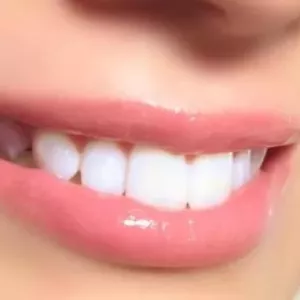أهم نصائح وارن بافيت للمستثمرين الأفراد

مقدمة
يُعد وارن بافيت واحدًا من أنجح المستثمرين في تاريخ البشرية، وقد بنى ثروته من خلال استراتيجيات استثمارية بسيطة ولكن فعالة، جعلته يُلقب بـ "أوراكل أوماها". ما يميز بافيت هو تركيزه على الاستثمار طويل الأجل، وقدرته الفريدة على قراءة الأسواق واتخاذ قرارات ذكية.
في هذا المقال، سنستعرض لك أهم نصائح وارن بافيت للمستثمرين الأفراد، لتتعلم كيف تفكر وتستثمر مثل أحد أغنى رجال العالم، حتى لو كنت تبدأ برأس مال بسيط.
من هو وارن بافيت؟
وارن بافيت هو الرئيس التنفيذي لشركة بيركشاير هاثاواي، ويُعتبر رمزًا للاستثمار القائم على القيمة. بدأ مسيرته الاستثمارية منذ سن مبكرة، وتمكن من تحويل استثمارات بسيطة إلى مليارات الدولارات، من خلال الالتزام والانضباط والابتعاد عن المضاربة العشوائية.
نصائح وارن بافيت الذهبية للاستثمار
1. استثمر فيما تفهمه فقط
"لا تستثمر أبدًا في عمل لا يمكنك فهمه."
ينصح بافيت المستثمرين الأفراد بالابتعاد عن الاستثمارات الغامضة أو المعقدة. اختر شركات أو قطاعات تفهمها جيدًا وتعرف كيف تعمل.
2. ركز على القيمة وليس السعر
"السعر هو ما تدفعه، أما القيمة فهي ما تحصل عليه."
الأسعار قد تتقلب يوميًا، لكن القيمة الحقيقية للشركة أو الأصل الاستثماري هي ما يجب أن يُبنى عليه قرارك. لا تنخدع بالأسهم الرخيصة أو العروض المؤقتة.
3. فكر على المدى الطويل
"أفضل وقت للاحتفاظ بسهم هو إلى الأبد."
بافيـت لا يبحث عن الربح السريع، بل عن الاستثمارات التي تنمو على المدى الطويل. هذا التوجه يقلل من المخاطر ويزيد من فرص النجاح الحقيقي.
4. ابقَ هادئًا في أوقات الذعر
"كن خائفًا عندما يكون الآخرون جشعين، وكن جشعًا عندما يكون الآخرون خائفين."
في أوقات الأزمات، يبيع الكثيرون ممتلكاتهم بسبب الخوف. وهنا تأتي الفرصة للمستثمر الذكي لشراء أصول جيدة بأسعار منخفضة.
5. الادخار قبل الاستثمار
قبل أن تبدأ في الاستثمار، تأكد من أنك تدير أموالك بحكمة. بافيت يؤمن بأهمية الادخار كمصدر لبناء رأس المال اللازم للاستثمار.
6. تجنب الديون غير الضرورية
الديون قد تعرقل طريقك نحو الاستقلال المالي. لا تستخدم القروض لشراء أسهم أو للاستثمار، خاصة إذا لم تكن لديك الخبرة الكافية.
7. تعلم دائمًا ولكن تصرف بعقلانية
"تعلمك مدى الحياة هو أحد أهم استثماراتك."
بافيـت قارئ نهم ويؤمن بأن التعلم المستمر هو مفتاح النجاح. لكن الأهم من التعلم هو اتخاذ قرارات عقلانية بناءً على ما تعلمته.
كيف تطبق نصائح وارن بافيت على استثمارك الشخصي؟
1. ابدأ بمبلغ صغير
طبق ما تعلمته في نطاق صغير حتى تكتسب الخبرة، ثم وسّع استثماراتك تدريجيًا.
2. تجنب متابعة السوق يوميًا
لا تنشغل بالتقلبات اليومية، بل ركز على أداء أصولك على المدى الطويل.
3. اعتمد على البحث وليس التوصيات
لا تستثمر فقط لأنك سمعت نصيحة على مواقع التواصل. قم بالبحث والقراءة بنفسك.
4. كن صبورًا
الثروة لا تُبنى في ليلة، بل على مدى سنوات من الانضباط والاستمرارية.
خاتمة
نصائح وارن بافيت لا تحتاج إلى تعقيد أو عبقرية خارقة، بل إلى التزام وانضباط وفهم للأساسيات. سواء كنت مبتدئًا أو لديك خبرة سابقة، فإن تطبيق هذه المبادئ يمكن أن يحدث فرقًا كبيرًا في نتائجك الاستثمارية.
ابدأ اليوم، وكن مستثمرًا يعتمد على القيم، لا على العشوائية. وثق أن الاستثمار الذكي لا يحتاج إلى الحظ، بل إلى قرارات واعية تُبنى على مبادئ راسخة، تمامًا كما يفعل وارن بافيت.
الكلمات المفتاحية (Keywords):
وارن بافيت، نصائح وارن بافيت، استثمار ذكي، استثمار طويل الأجل، كيف أستثمر مثل وارن بافيت، نصائح للمستثمرين، الاستثمار الشخصي، استثمار الأموال، تعلم الاستثمار، وارن بافيت للمبتدئين، أفضل استثمار آمن، النجاح في الاستثمار، وارن بافيت بالعربي.







